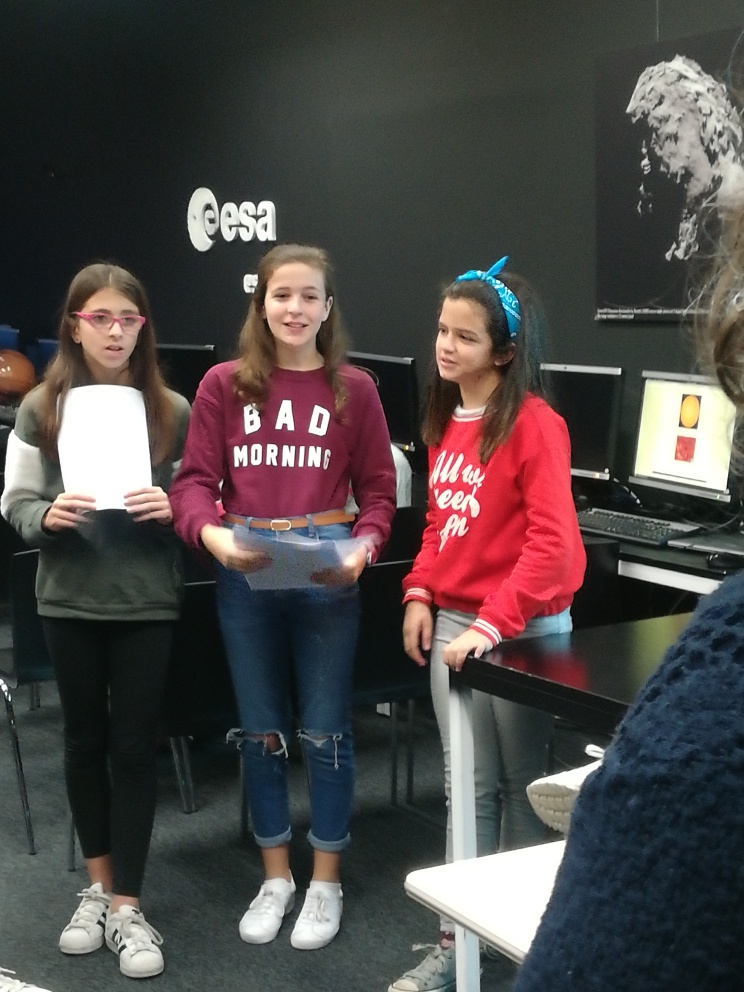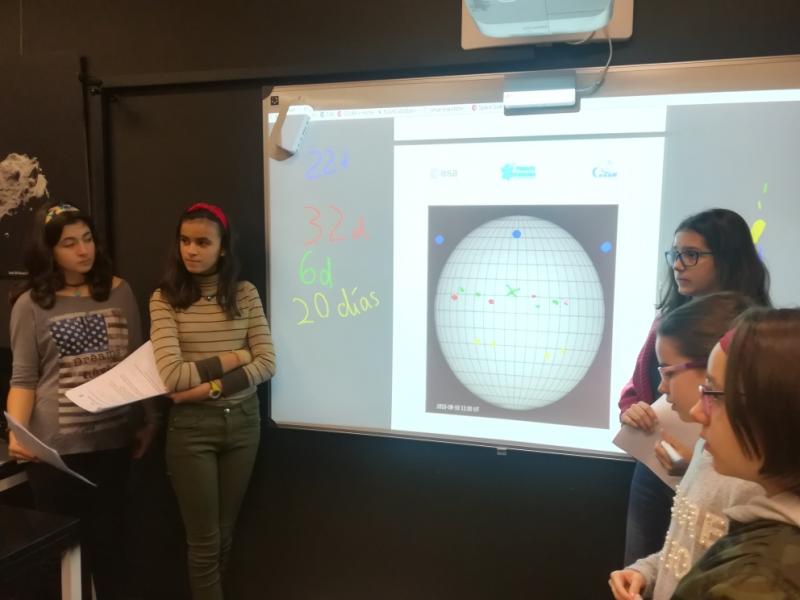Sun rotation - Nuestra Señora de las Victorias school
24/January/201855 students - 1 year of ESO
On the 24th of January, a group of 55 students in their third year of ESO came to ESAC to be scientist for a day and to work hand-to-hand with the ESA scientist.
The topic research selected by them, as part of their space-science experience was the study of the solar period. This experience, offered by the CESAR Team to schools in Spain, started in the school classrooms, with the support from their teachers. They found time to watch, together with the students, a set of videos generated by the CESAR Team related to the European Space Agency and it space exploration.
After this activity done in the school, the classroom contact on Skype the CESAR coordinator, Dr. Michel Breitfellner, who answered them a lot of questions related to space which triggered after the visualization of the videos.
Once at ESAC, on the 24th of January, the 55 students were separated in two smaller groups. Meanwhile one of the groups went to see the facilities of the only base of the European Space Agency in Spain and some of the most relevant space mission mock-ups settled in it, the another group performed a research using the STEM methodology.

For the execution of the investigation, the group of 23 students was divided in teams of 5-6 people, having each one of the team members a key and completementary role to the team. Each group made an hypothesis on the time the Sun takes to rotate around itself and by using a set of images collected by the CESAR solar telescope at ESAC, the students could double check their hypothesis with their conclusions. Finally each group shared their results with the scientific community formed by their classmates, revealing the different Sun rotation periods at the solar equator and poles.

Once the researches completed their research and the explorers discovered how ESA archives get filled with plenty of data from where discoveries are revealed, the groups swap their activities.